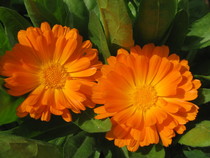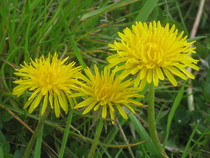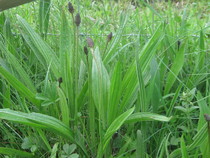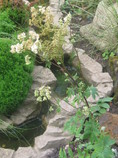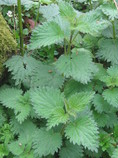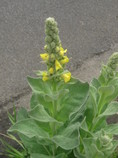Most of the plants I prescribe have a long traditional use in Western Herbal Medicine, and many will be familiar to the lay person. I also use plants from other traditions such as Ayurvedic Medicine, Chinese Medicine and South American Medicine, which gives me access to a wide range of therapeutic properties, knowledge and a broader perspective.
I have outlined the properties of a few of our more familiar herbs below;
Galium aparine (Cleavers)
Cleavers is an excellent tonic for the lymphatic system, with alterative and diuretic actions and used for a wide range of lymphatic system problems such as swollen glands, tonsillitis, skin conditions (boils, eczema, psoriasis) , ulcers and tumours. It is also used in the treatment of urinary tract problems such as cystitis, irritation, and stones.
Calendula officinalis (Marigold)
Petals and flowers of marigold have anti-inflammatory, antifungal, antispasmodic and cleansing actions. It has a long traditional use in Europe to treat skin conditions such as infections, inflammation and improve wound healing. Internally it is used for inflammatory conditions of the gastric tract, urinary tract and painful periods.
Taraxacum officinalis rad (Dandelion)
The name Dandelion is a corruption of the latin ‘dens leonis’ meaning lion’s teeth. Grows wild in most temperate regions; a perennial growing to 50cm. It is a good appetite stimulant, liver tonic and diuretic. It improves digestion and absorption and will ease symptoms of IBS, indigestion, and poor digestion. It is also used for liver detoxification, constipation, skin problems (eczema, psoriasis), arthritis, high blood pressure.
Plantago lanceolata (Plantain)
Plantains have valuable healing properties especially for the respiratory tract. It soothes inflamed and sore membranes, making it ideal for coughs, bronchitis, inflammation due to allergies/infection. It is also one of Western Medicine’s primary topical healing agents and can be used as a poultice for cuts, wounds, bites (reduces swelling), and haemorrhoids.
Filipendula ulmaria (Meadowsweet)
This familiar plant grows easily in damp patches, especially ditches and banks, of streams or rivers. Meadowsweet is a long standing traditional remedy in Europe for gastric problems such as acid reflux, gastritis, peptic ulcer and heartburn. It contains salicylic acid which also protects the lining of the stomach as it works as an anti-inflammatory. Also used for arthritis, painful joints.
Urtica dioica (Nettle)
Has a long history of Traditional use throughout Europe as a spring tonic and detoxifying remedy, often used by actively stinging the skin around an affected joint – subsequent inflammation and pain will subside after 4 – 8 days, AND relieve arthritis. Taken internally, it supports the whole body, and is especially used in childhood eczema, bleeding, blood sugar regulation, BPH where it improves urine flow, reduces frequency/nocturia.
Verbascum Thapsus (Mullein)
Mullein is a beneficial respiratory remedy; it tones the mucous membranes, reduces inflammation, stimulates fluid production and is therefore expectorant. It is specific for bronchitis, catarrh, influenza, otitis media (external use as an infused oil) .
Herbalist in Southam



